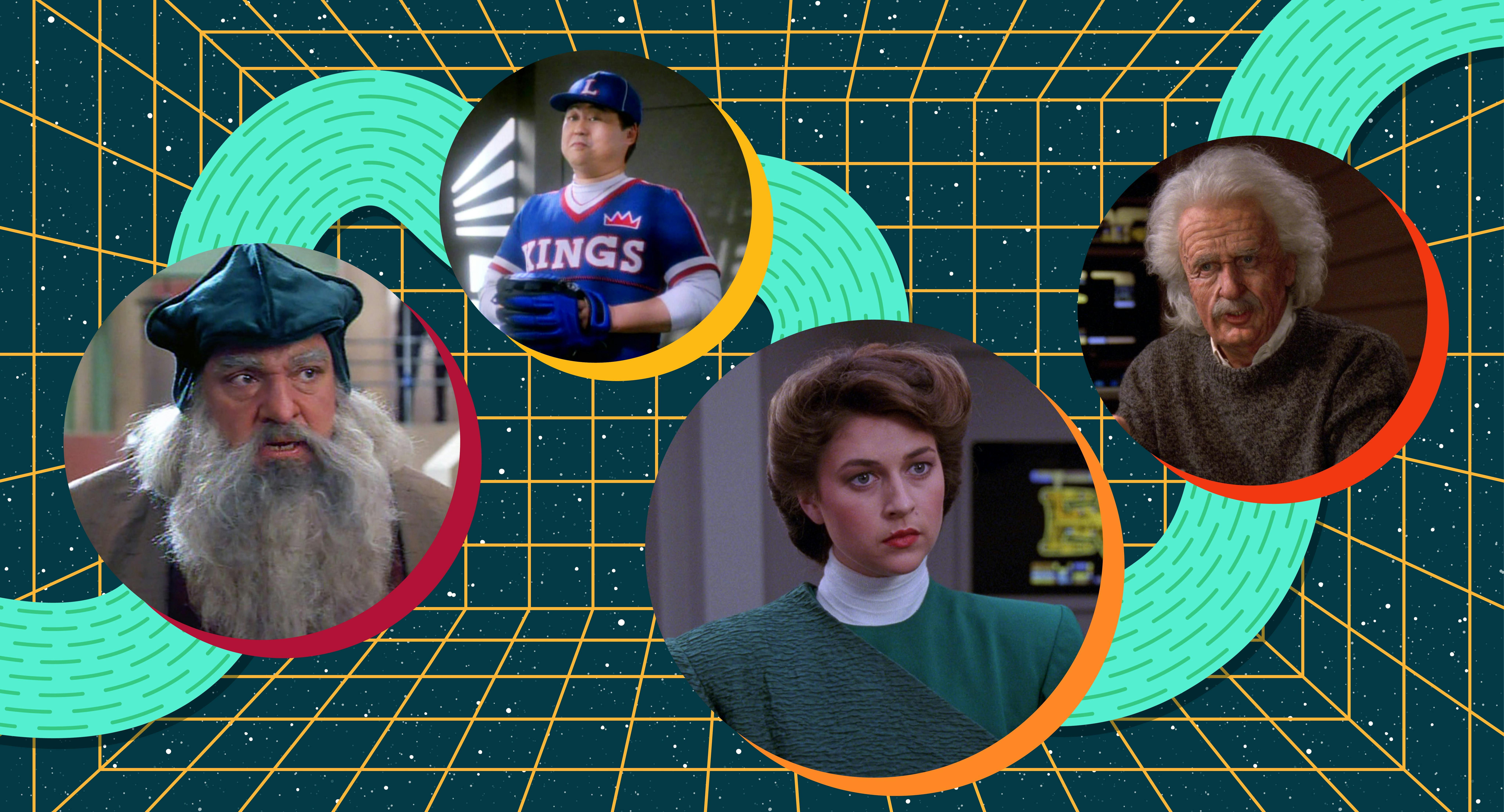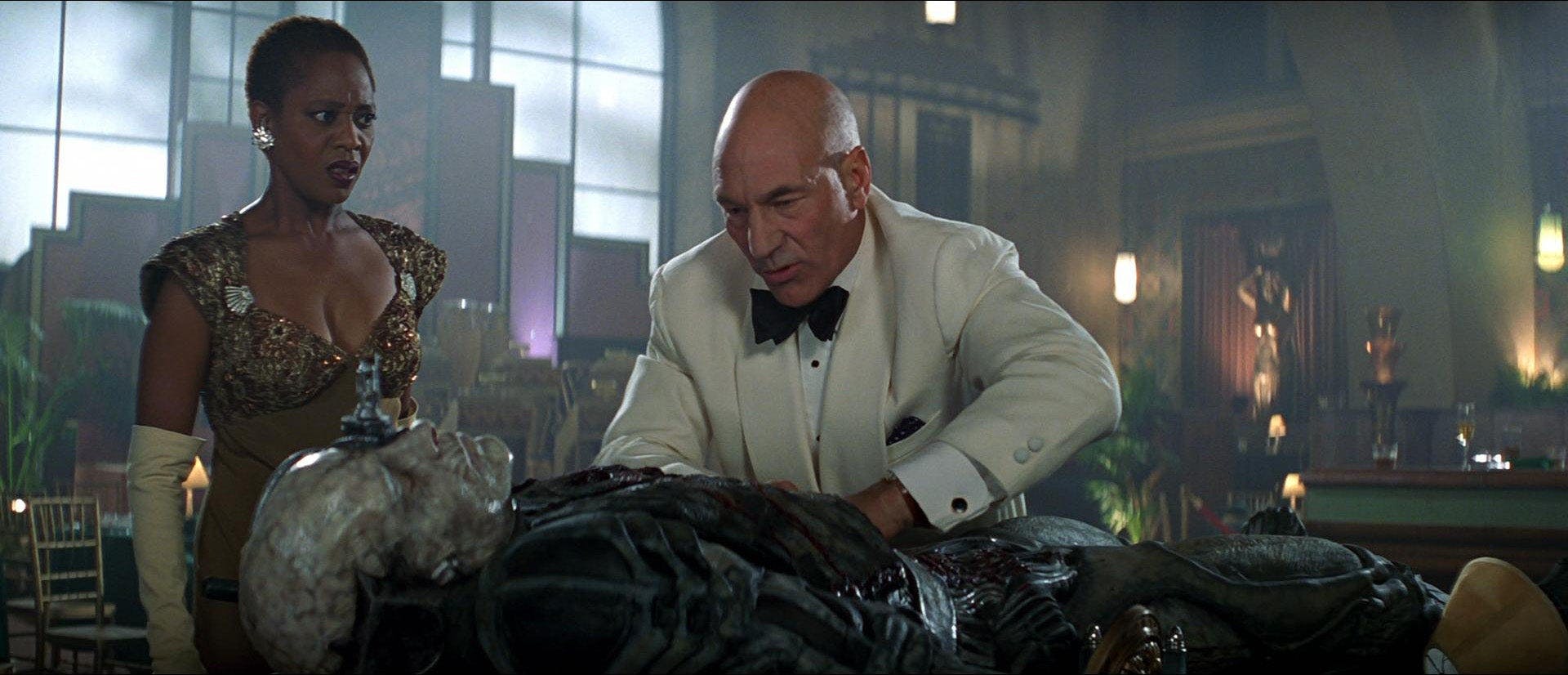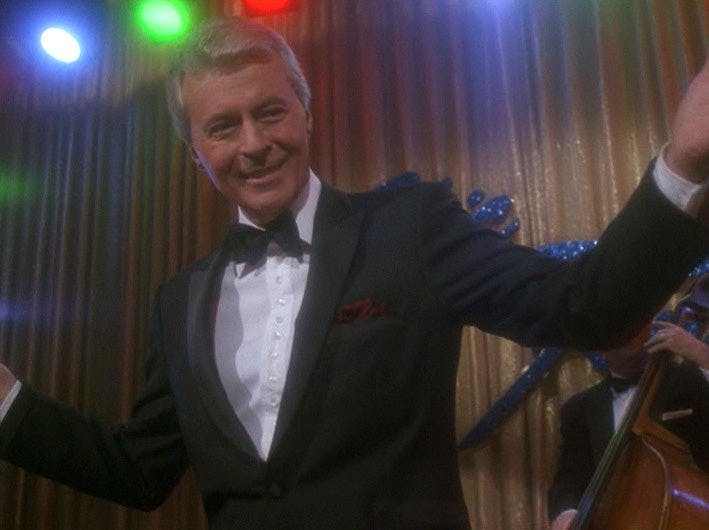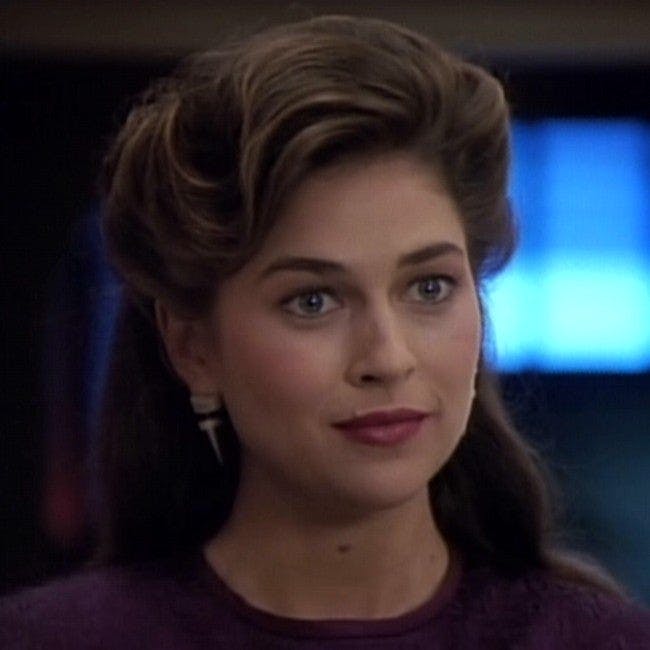Published Nov 1, 2022
A Trick of the Light: On the Ethics of Holograms
When are our faces not our own?

StarTrek.com / Rob De Hart
if I should stay / I would only be in your way
Whitney Houston joins a list of artists (in film, in music, and beyond) whose body of work now extends beyond life. In 2019, Billboard.com reported that “in partnership with the Estate of Whitney E. Houston, BASE Hologram has revealed the first dates for the upcoming hologram production An Evening with Whitney: The Whitney Houston Hologram Tour.” The show included digital remasters of Houston’s songs for her hologram to perform “live,” along with new choreography.
Whitney Houston is dead. Whitney Houston is touring. Long live Whitney Houston.

BASE Hologram
don’t you wanna dance say you wanna dance don’t you wanna dance
In 1938, novelist, ethnographer, and major light of the Harlem Renaissance Zora Neale Hurston published Tell My Horse: Voodoo and Life in Haiti and Jamaica, turning her attention to what was, at the time, a relatively unfamiliar concept for her readership beyond the pulpiest of pulp horror.
“A zombie,” she wrote, “is supposed to be the living dead – people who die and are resurrected, but without their souls. And they can take orders, and can never be tired, and can do what the master says without cease.”
A new icon of popular culture was born.
But while race undergirds the themes of earlier works like White Zombie and George Romero’s Night of the Living Dead, the pop-cinema creature was quickly divorced from the fears which had initially given it shape. Zombies were not, at first, the manifestation of white, straight, late 20th Century middle-class fears of “infection” or being overrun by othered, dehumanized hordes.

StarTrek.com
Instead, as journalist and professor Amy Wilentz puts it in the New York Times, zombies are “a very logical offspring of New World slavery” because “to become a zombie was the slave’s worst nightmare: to be dead and still a slave, an eternal field-hand […] devoid of consciousness and therefore unable to critique the system that has entrapped him. He’s labor without grievance. He works free and never goes on strike.” (In First Contact, when Jean-Luc Picard describes the Borg to Lily Sloane, a 21st Century Black woman, she recognizes them immediately and succinctly as “bionic zombies”).
The digital age has afforded new ways to animate the dead. In 1997, footage of Fred Astaire was spliced and digitally manipulated for the Super Bowl so that he could dance with a Dirt Devil cleaner. His dismayed daughter Ava said in an open letter to the company (enclosed with her own, broken vacuum) that “your paltry, unconscionable commercials are the antithesis of everything my lovely, gentle father represented” and that she was “saddened that after his wonderful career, he was sold to the devil.”
But the devil kept whirling, and in a 1998 interview with Guitar World, Prince was asked about these wondrous new opportunities. “With digital editing, it is now possible to create a situation where you could jam with any artist from the past. Would you ever consider doing something like that?” Prince replied, “Certainly not. That's the most demonic thing imaginable. Everything is as it is, and it should be. If I was meant to jam with Duke Ellington, we would have lived in the same age. […] To prevent that kind of thing from happening is another reason why I want artistic control.”
Despite this lifelong battle to steer his own legacy, however, at the 2018 Super Bowl, two years after his death and following similar projections of Michael Jackson and Tupac Shakur, “Prince” joined Justin Timberlake (whom Prince had, in life, roundly and loudly mocked at a party for daring to claim he was “bringing sexy back”) for an undead duet of his song, “I Would Die For U.”
When that Super Bowl halftime cut to commercial, recordings of Martin Luther King, Jr. were used as a mellifluous, passionate voice-over to sell Dodge trucks.
Dancing with the Devil
Star Trek has, of course, a long history with holograms, and an even longer one in pursuing a thoughtful exploration and expansion of ideas of personhood.
The humanism (with ever-capacious valuations of what “human” might mean) that creator Gene Roddenberry insisted upon happily risks corniness for the sake of earnestness. Confronted, famously, with Q’s misanthropic cynicism that echoes Hamlet’s own, Captain Picard spits back, “What he said with irony, I now say with conviction — what a piece of work is a man!”
But no matter how noble in reason or infinite in faculty, when it comes to holographic life, Starfleet falters. Data might be a person, and Geordi’s repair drones might stumble their way to sentience, but even by the end of Voyager, The Doctor laments that his fellow holograms remain a rights-less labor class.
The Holodeck sits at the absolute frontier of Federation hardware. It combines the matter/energy technologies that also make possible the replicator and transporter – technologies which, far more than interstellar travel, advanced Earth to a post-scarcity society. Despite this, holograms are introduced in “Encounter at Farpoint” (and largely remain across the various series iterations) as the province of recreation, training, experimentation, erotic dalliance – and of course, inevitably, malfunction.

StarTrek.com
Like the Romans discovering steam power and only using it to power diverting toys for children, the Federation seems not to know what they have on their hands. Holo-tech’s applications are thus frequently disastrous, as time and again the ghost in the machine challenges its fleshy counterpart with flashes of sapience — Moriarty, The Doctor, Vic Fontaine, and Minuet remind the crew that you need not bleed when pricked to be a person.
All well and good, there may be a soul in the silicon. But what about when there isn’t? What about when the hologram isn’t a person – but wears a real person’s face?
In the Pale Moonlight
The indignity of summoning Houston – a woman whose life was itself marred and shortened by the relentless need for the show to go on – from the grave to once more dance and sing (and to shed absurd amounts of money upon investors and rights-holders) throws in rather stark relief Data’s praise by Albert Einstein, Kathryn Janeway receiving congratulations on her brilliance from Leonardo DaVinci, and Benjamin Sisko summoning (fictional) baseball great Buck Bokai to play catch with his son.

StarTrek.com
The dilemma cuts the other way, too. Sisko himself says he dislikes the Vic Fontaine simulation specifically because it effaces the truth of history – that in reality, a Black man such as himself could never have walked into such a bar – but if it is true of a historical milieu, it must be true of the individual, too. Is it right to “shave off” the unpleasant realities of real persons – as for example, when The Doctor encounters the Kyrian Archive’s monumental distortions of its foundation?
What right, if any, does a person have to a 'Do Not Simulate' clause? To what extent, if any, can stipulation be made about what can and cannot be done with one’s image? What obligation, if any, do we have to the facts of history?
The examination of these problems is not limited to the wishes of the dead. Lieutenant Barclay’s phantasmatic world, for example, is peopled by clownish versions of the Enterprise’s real staff – and an eroticized version of his crush and therapist Counsellor Troi as the “Goddess of Empathy,” whose fatuousness the real Deanna greets with a terse “muzzle it.”
Barclay’s antics are mirrored in more sympathetic terms when Geordi LaForge simulates the Enterprise’s key designer Leah Brahms to help him solve an engineering crisis, only to fall in love with “her” – and then, later in the series, meet the real Leah Brahms, who is utterly disgusted at the perceived violation.
Overseen by Quark, almost exclusively meant for erotic stimulation and not strictly subject to Federation mandate, DS9’s Holosuites are an even more egregious libertarian free-for-all. One enamored client is particularly keen to get his hands on a digitized version of Major Kira, to her great consternation and flat refusal of consent (Quark, in turn, is punished when the program is corrupted with his features instead). Odo’s first “date” with Kira, meanwhile, is only successful because he is tricked into mistaking her for her singing Holo-double, “Lola Chrystal.”

StarTrek.com
Writer-producer Ronald D. Moore argues, in Star Trek Encyclopedia, “that in a free society of responsible citizens, there should be little or no limit on what an adult can do in a Holodeck. Even if others might find certain activities objectionable, what one does in one's private space is no one's business; certainly not the government's.”
But as the proliferation of holo-novels like Dixon Hill and The Doctor’s own Photons Be Free (which lampoons his own crewmates with only slightly modified hairstyles as a “disguise”) demonstrates, the Holodeck is more than private recreation. Instead, it is a publicly-distributed art form. The Doctor’s crewmates themselves wonder anxiously what the world will think when they see these unkind caricatures (in retaliation, Paris makes The Doctor watch a program depicting him in turn as a leering creep).
And in our own era of both digital deep-fakes and “fake news,” we recognize that the technologies initially designed to amuse are quickly weaponized against a populace – a fact DS9 presciently forecasts in “In the Pale Moonlight,” when Sisko perpetrates his greatest lapse in conscience, using holo-tech to forge agitprop that will secure Romulan aid in the Dominion War.
As the crews so often learned, then, diversions like the Holodeck are not so closed a box as everyone would hope, and as data collection resources like Facebook and Instagram (and shadier upload apps of even more uncertain allegiance) multiply, we will quickly have to decide when are our faces not our own?
This article was originally published on September 27, 2019.
Anthony Oliveira (he/him) is a PhD, culture critic, and writer. He can be found on twitter at @meakoopa.
Stay tuned to StarTrek.com for more details! And be sure to follow @StarTrek on Facebook, Twitter, and Instagram.

